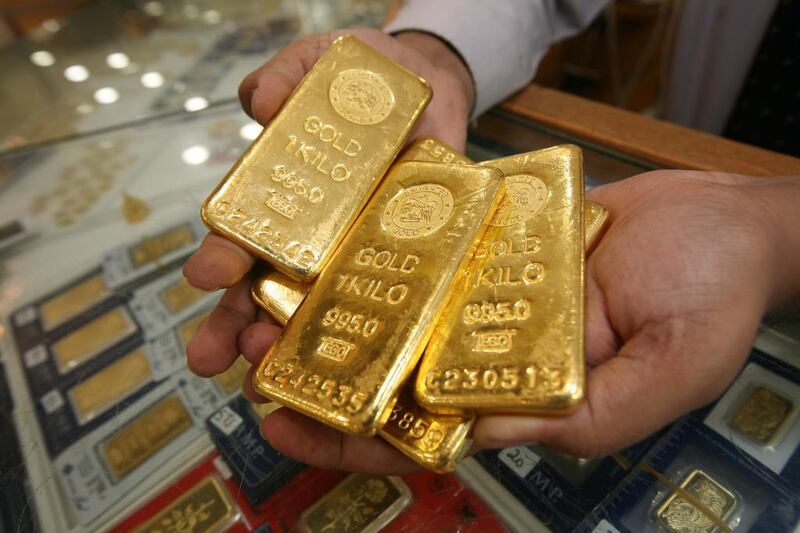Since the beginning of this month, gold has been drifting lower. The precious metal dipped through support level after support level on the lack of safe-haven buying. At the time of writing, gold closed at US$1,277 and is down 13 per cent compared to a month ago. While it is far from the annual lows seen in January, there's been a lull in impetus since the German elections.
Spot Gold's lowest price in 2017 was $1,127.80 during the first month of the year. In the first half of the year there were several rallies correlated to geopolitical uncertainty. The first peak was reached during Donald Trump's presidential campaign. Gold leapt again during the Brexit Article 50 declaration in March. During the summer, disappointing US inflation figures made the headlines. The prospect of more uncertainty in the world's largest economy pressured the US dollar and boosted gold. Nuclear war tensions between North Korea and the US encouraged safe-haven buying in September with the elections in Germany adding value to the gold price. Now, however, we're in the eye of the storm, when everything seems calm but if the markets have anything to teach us about risk, it's that the next challenge is just around the corner.
One such risk is the Federal Reserve, which - in spite of some hawkish voices - appears ambivalent on the next interest rate hike. During the inflation rate disturbance, doubts crept in that it would take place before the end of the year. Now that US inflation has put in a slight recovery, another economic disturbance raised its head. There were unexpected job losses in the US during September, largely attributed to hurricane damage. While the effect is likely short term, it has created a mini crisis of confidence. Investors were not happy and are asking themselves what comes next and how the Federal Reserve will react.
Added to this uncertainty is President Trump’s upcoming nomination for the new Fed chair. Jay Powell, John Taylor, Janet Yellen, Gary Cohn and Kevin Warsh are the top five picks. Mr Powell appears to be Trump’s favourite candidate, and the least likely to deviate from the markets’ expectations of more interest rate hikes in 2018. It seems likely that the dovish Ms Yellen may be at a disadvantage when it comes to reappointment.
_______
Read more:
Will gold shine brightly again this autumn as bitcoin crashes?
Is Black Monday about to strike again?
What would a war in North Korea mean for Middle East investors?
_______
The underlying economic fundamentals have to be taken into consideration no matter who is nominated. Inflation rates are still soft, jobs took a hit in September and GDP is expected to have been negatively impacted by hurricane damage.
Hand-in-hand with the interest rate risk is Mr Trump’s tax reforms, which could face a brick wall as they work their way through the political system. Doubts are centred on whether tax incentives would be sacrificed for tax rate cuts, which experts say could raise plenty of dissatisfaction. So, the US dollar could be handicapped by further political uncertainty around Mr Trump’s tax reforms, meaning that gold may enjoy a hole in one.
Given all these factors, the gold price still has some juice left in it through the end of the year, and a range of $1260-1300 is still feasible.
Hussein Sayed is the chief market strategist at FXTM






